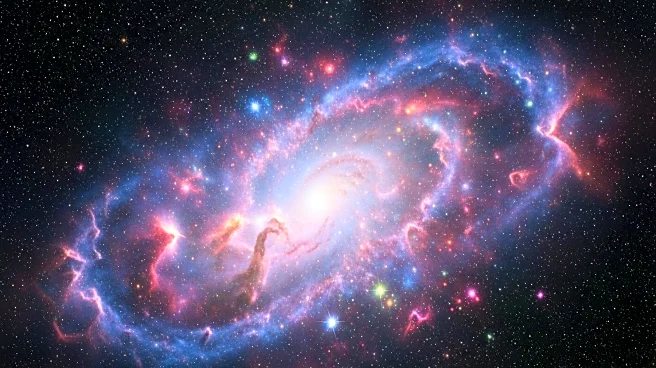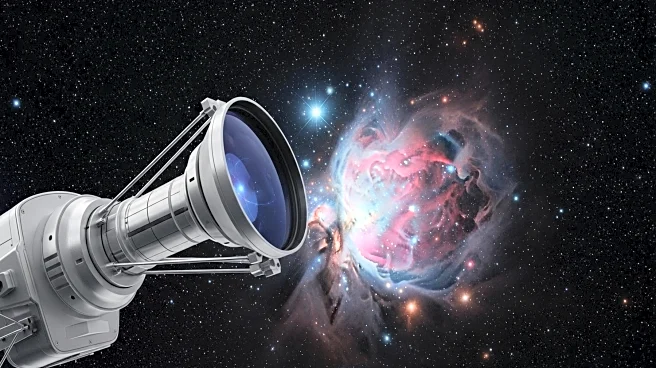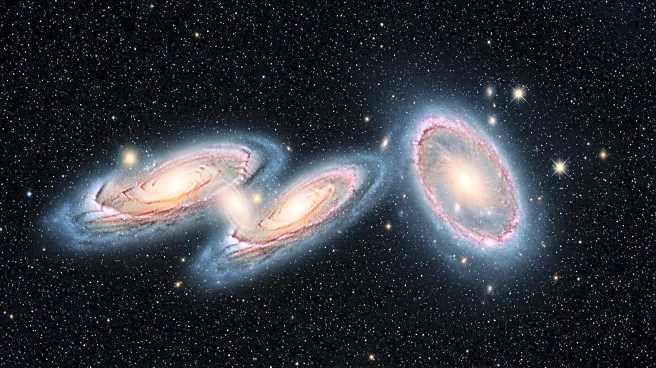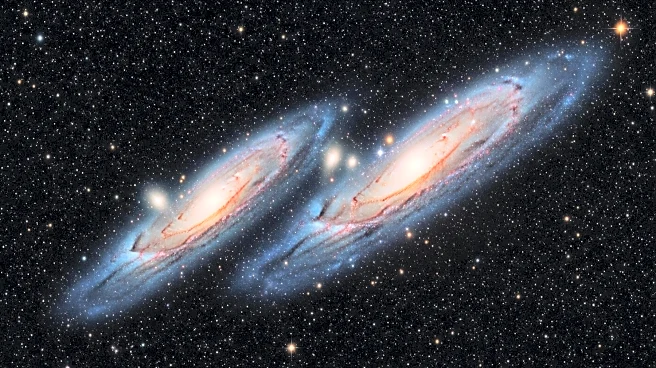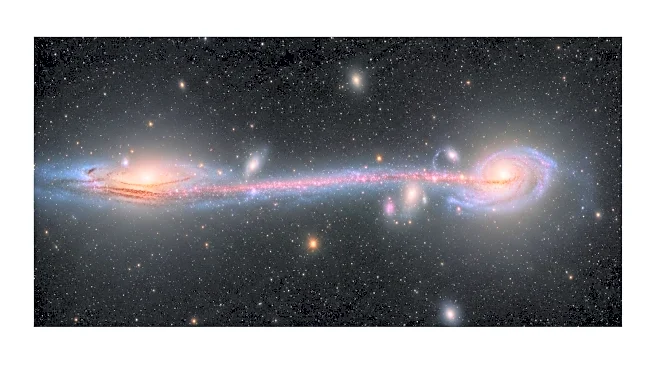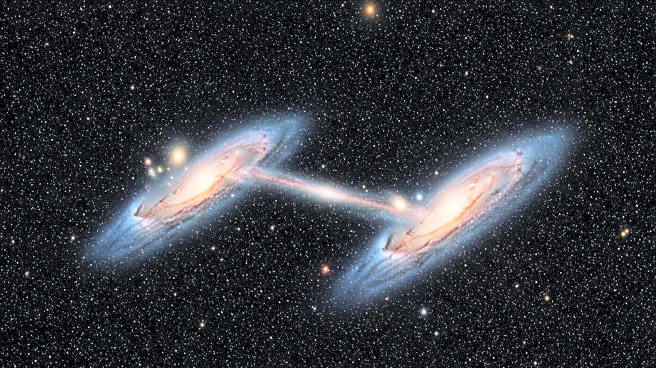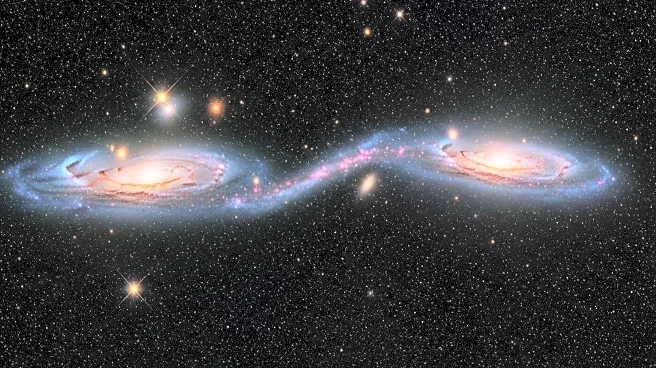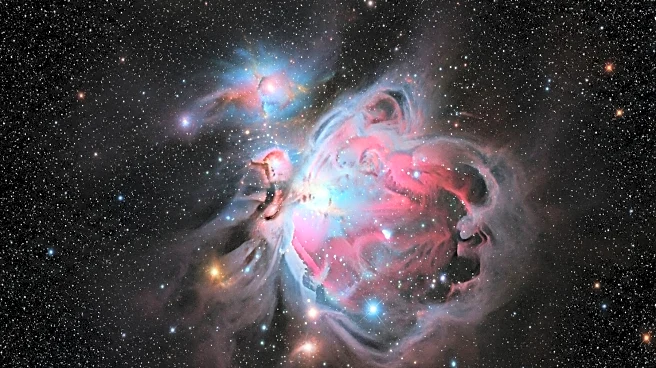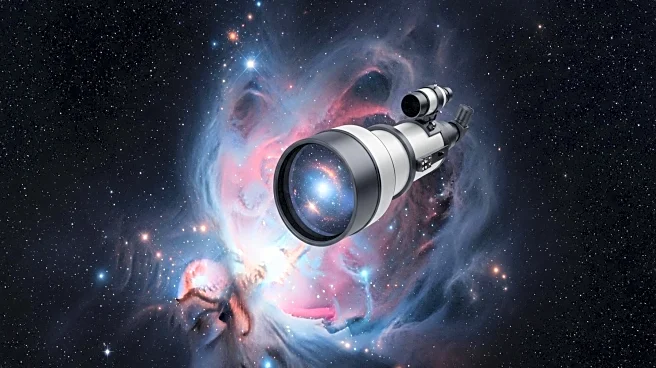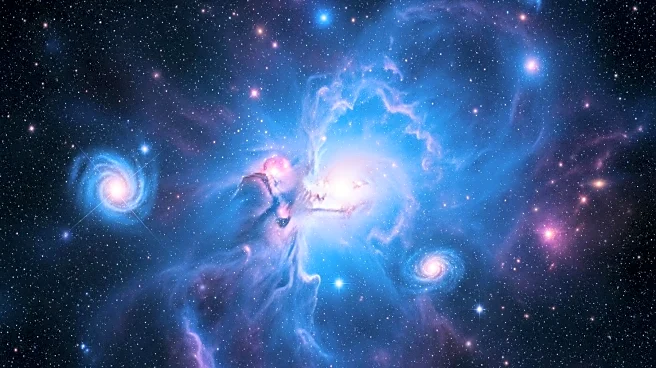What's Happening?
Two galaxies, NGC 4532 and DDO 137, are falling into the Virgo Cluster at a staggering rate of 547 miles per second. As they move through the cluster's hot gas cloud, they experience ram-pressure stripping, which heats and removes hydrogen gas, forming a 1.6-million-light-year-long tail. This phenomenon was previously identified by the Arecibo radio telescope, and recent observations by the Australian Square Kilometre Array Pathfinder (ASKAP) have revealed a colossal bridge of gas between the galaxies. The study, led by astronomer Lister Staveley-Smith, highlights the role of tidal forces and proximity to the Virgo Cluster in shaping the gas dynamics.
Why It's Important?
The observations of NGC 4532 and DDO 137 provide valuable insights into the dynamics of galaxy interactions and the role of cosmic forces in shaping galactic structures. The ram-pressure stripping and tidal forces observed in these galaxies offer a glimpse into the processes that influence star formation and galaxy evolution. Understanding these dynamics is crucial for astrophysics and could impact theories on the lifecycle of galaxies and the formation of cosmic structures. The findings may also inform future studies on galaxy interactions and their impact on star formation rates.
What's Next?
Researchers will continue analyzing the data from ASKAP to explore the dynamics of galaxy interactions in the Virgo Cluster. The role of ram-pressure stripping and tidal forces in shaping galactic structures will be investigated further, potentially leading to breakthroughs in understanding galaxy evolution. The findings may also inform future research on the impact of cosmic forces on star formation rates and the lifecycle of galaxies. The ASKAP radio telescope will continue to play a key role in these investigations, providing detailed observations of cosmic phenomena.
Beyond the Headlines
The study of NGC 4532 and DDO 137 could have broader implications for understanding the dynamics of galaxy interactions and their impact on star formation. The observations offer insights into the processes that influence the formation of cosmic structures and the role of cosmic forces in shaping galactic environments. This research may also shed light on the conditions that lead to star formation in different galactic environments, influencing future studies on galaxy evolution and the lifecycle of stars.

